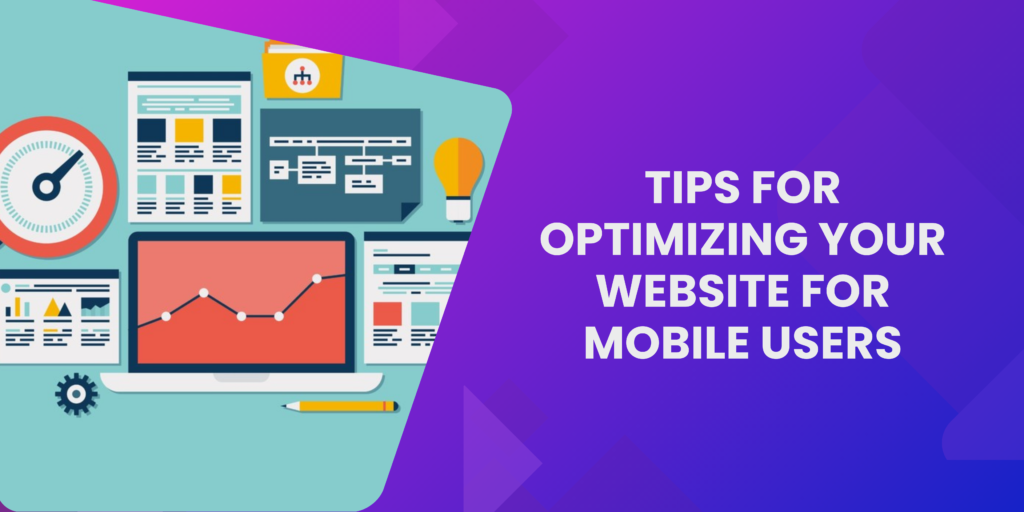In today’s digital landscape, optimizing your website for mobile users is no longer optional—it’s essential. As mobile traffic continues to grow, businesses must ensure that their websites are easily accessible and user-friendly on all devices. This article provides tips on how to optimize your website for mobile users, covering key elements such as responsive design, mobile SEO, and speed optimization. By implementing these strategies, you’ll improve your website’s user experience and ranking, especially in competitive markets like digital marketing courses in Pune.
2. The Rise of Mobile Traffic
Mobile internet usage has surged, and now accounts for more than 50% of global web traffic. With people increasingly relying on smartphones to browse the internet, businesses need to cater to mobile users. Failing to do so can result in lost traffic, higher bounce rates, and poor search rankings. For those in the digital marketing space, particularly in areas like Pune where online courses are booming, mobile optimization is key to staying competitive.
3. Understanding Mobile-Friendly Websites
A mobile-friendly website adapts seamlessly to different screen sizes, ensuring content remains accessible, readable, and navigable. Key factors include responsive design, quick load times, and minimal scrolling or zooming requirements. Without these features, your site can frustrate users and negatively affect your SEO rankings.
4. Responsive Design
Responsive web design ensures that your site automatically adjusts to fit any screen size. Key elements include flexible grid layouts, scalable images, and media queries. This approach enhances the user experience and helps reduce bounce rates. If you offer digital marketing courses in Pune, a responsive design ensures that potential students can easily browse course information on their mobile devices.
5. Site Speed Optimization
Site speed is crucial for mobile users, who expect fast load times. To enhance your mobile site’s speed:
- Minimize HTTP requests.
- Optimize images and videos.
- Leverage browser caching.
- Use a content delivery network (CDN). Fast-loading pages lead to higher engagement and conversion rates, which is especially important for digital marketing programs that aim to attract tech-savvy users in Pune.
6. Mobile-First Indexing
Google’s mobile-first indexing means that Google primarily uses the mobile version of a site for indexing and ranking. If your site isn’t optimized for mobile, you may see a drop in search rankings. To prepare, ensure your mobile version offers the same valuable content as the desktop version. For businesses offering digital marketing courses in Pune, ranking well in mobile searches is critical to attracting local students.
7. Simplified Navigation
Mobile navigation should be straightforward and intuitive. Ensure that menus are easy to access and that users can navigate with minimal effort. Use clear, concise menu items, and consider implementing a sticky navigation bar that stays visible as users scroll. Simplified navigation enhances the mobile user experience, driving higher engagement.
8. Optimizing for Touchscreens
Designing for touchscreens requires a different approach than desktop. Ensure buttons are large enough to tap easily, with enough spacing between clickable elements to avoid accidental clicks. Incorporating swiping gestures and touch-based interactions makes navigation smoother and more user-friendly, especially for mobile users browsing digital marketing courses in Pune.
9. Mobile-Friendly Content
Content for mobile users should be concise and scannable. Break up long paragraphs, use bullet points, and include headers to organize information. Mobile users often skim content, so highlight key information at the top of the page. Videos and infographics are also effective ways to engage mobile users without overwhelming them with text.
10. Compressing Images and Videos
Large media files can slow down your site, especially on mobile devices with limited data. Use image compression tools to reduce the file size without compromising quality. This speeds up load times and improves user experience, particularly for mobile visitors exploring your digital marketing courses.
11. Using Accelerated Mobile Pages (AMP)
AMP is a framework that enables fast-loading mobile pages. Google prioritizes AMP-enabled sites in search results, making it a great option for businesses focused on SEO. Implementing AMP can significantly boost page load times and improve mobile performance.
12. Mobile SEO Best Practices
To optimize your site for mobile SEO:
- Use mobile-friendly meta tags.
- Ensure your site is crawlable and indexable.
- Focus on local SEO if you target a specific geographic area, like digital marketing courses in Pune.
- Create mobile-optimized content that is easy to read and engages users.
13. Mobile App Integration
Depending on your business model, a mobile app can enhance user engagement and offer personalized experiences. While not necessary for every business, apps can complement your mobile website, offering features like push notifications and offline access. For digital marketing courses, apps can provide a convenient platform for students to access course materials.
14. Testing Your Mobile Site
Regular testing ensures that your site remains mobile-friendly. Use tools like Google’s Mobile-Friendly Test, PageSpeed Insights, and Lighthouse to analyze your site’s mobile performance. Test across multiple devices and screen sizes to ensure a consistent user experience.
15. Future Trends in Mobile Optimization
Emerging trends like voice search, AI-driven chatbots, and augmented reality (AR) are shaping the future of mobile optimization. Staying ahead of these trends can give your website a competitive edge. Incorporating voice search optimization, for example, can enhance the visibility of your digital marketing courses in Pune.
16. Conclusion
Optimizing your website for mobile users is essential for staying competitive in today’s digital world. By focusing on responsive design, fast load times, simplified navigation, and mobile-friendly content, you can improve user experience and boost your site’s performance in mobile search rankings. Businesses offering digital marketing training institute in Pune should prioritize mobile optimization to attract and retain tech-savvy learners.
